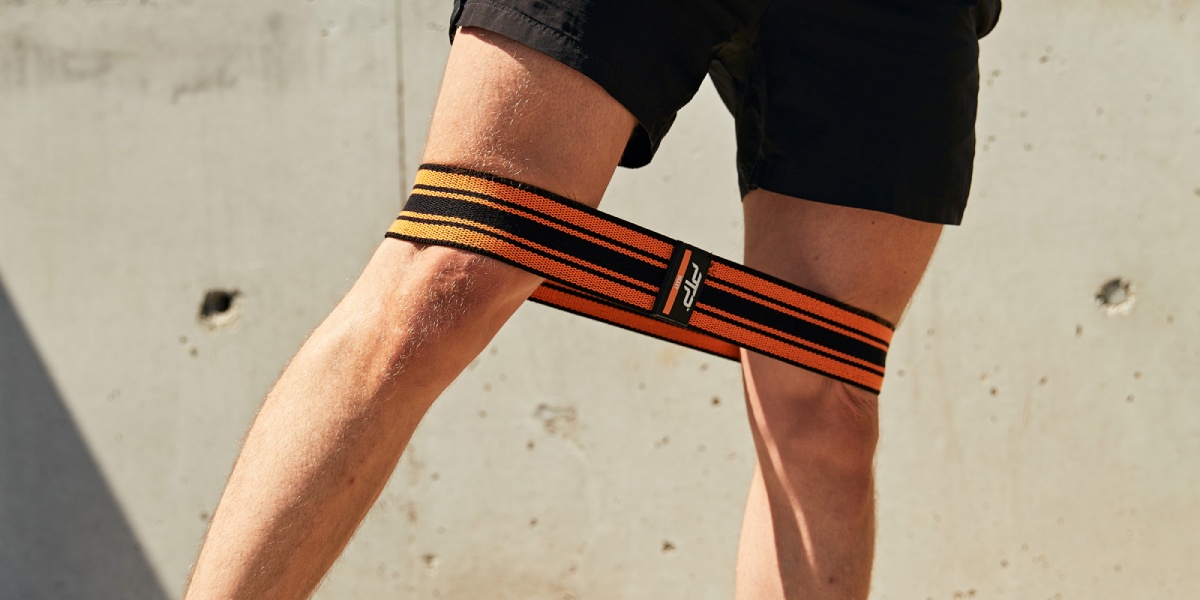When it comes to resistance training, you don't need fancy equipment to see results. Enter resistance bands: the compact, affordable, and versatile tool for building full-body strength—no gym required.
In this guide, we'll explore what resistance training is, the benefits it offers, how often you should do it, plus you'll find some easy exercises to try at home.
What is Resistance Training?
Resistance training involves using external resistance—such as resistance bands, body weight, or weights—to challenge muscles and stimulate growth. Strength training on the other hand, is a form of resistance training focused specifically on increasing maximal strength, often using heavier loads and lower repetitions.
Many sporting athletes like footballers incorporate resistance training into their routines to help improve overall strength, endurance, and injury resilience without adding excessive bulk, ensuring agility and speed remain a priority.
Resistance bands might seem like a small tool but don't underestimate its power—and burn.
What are the Benefits of Resistance Training?
PTP resistance bands allow for progressive overload while minimising joint strain, making them ideal for those looking to build strength without overloading their bodies.
By incorporating resistance training into your routine, you can enhance muscular strength, endurance, and joint stability. You can benefit significantly from stronger legs, core, and stabilising muscles in everyday life (like carrying the groceries up the stairs) or on the field if you play football. For example, it can help with sprinting, ball control, shielding the ball, and injury prevention.
Key Benefits:
- Increase muscle strength by building and toning muscles, making everyday tasks easier and improving athletic performance
- Enhanced endurance by increasing muscular endurance, allowing you to perform physical activities for longer periods without fatigue
- Improved power and speed for explosive movements
- Increased flexibility and core stability for balance and efficient energy transfer
- Injury prevention by strengthening muscles, ligaments, and tendons, particularly in active individuals
- Faster recovery by increasing blood flow to muscles and reducing muscle soreness
Are Ankle Straps Good for Resistance Training?
Yes, ankle straps can be a great addition to your resistance training routine, especially if you're looking to target lower body muscles more effectively!
They're particularly useful for exercises that isolate the legs and glutes. For example, football relies on lower body strength, explosive speed, and stability. PTP ankle straps, when paired with PTP resistance bands, are excellent for isolating key muscle groups needed for powerful sprints, sharp turns, and strong kicks.

How Often Should You Do Resistance Training?
The frequency of resistance training depends on your fitness goals, experience level, and recovery ability. However, as a general rule to see results, aim for:
- 2-3 resistance training sessions per week for general strength and injury prevention
- 3-4 sessions per week if focusing on specific areas such as power or endurance
It's important to focus on Time Under Tension (TUT) during resistance training—emphasising slow, controlled movements that evenly load the muscle during both concentric (lifting) and eccentric (lowering) phases. This approach optimises muscle strength, endurance, and coordinated movement.
How Can Resistance Training Be Used for Recovery?
When it comes to fitness, a bit of rest and recovery can work wonders. As an athlete or footballer, your muscles often take a beating from explosive movements, quick direction changes, and high-intensity play. That's where resistance training—particularly with PTP resistance bands—can be a game-changer for active recovery. Here's how:
- Enhancing blood flow to fatigued muscles
- Improving range of motion and flexibility
- Activating stabilising muscles to reduce injury risk
Resistance Band & Ankle Strap Exercises for Performance
Ready to take your training routine to the next level with resistance? Whether you're playing football, netball, or simply looking to increase strength, these tips are a must-try—all you need is a resistance band and ankle strap. Let's go!
1. Hip Abductions for Lateral Quickness
Targets: Gluteus medius, outer thighs (key for agility and lateral movement)
How to Perform: Attach the PTP ankle strap to one ankle and connect it to a PTP resistance band anchored at floor level. Stand sideways and lift your leg out to the side, controlling the movement.
Good For: Strengthens hip abductors for sharp directional changes and defensive stability.
2. Standing Leg Extensions for Kicking Power
Targets: Quadriceps (critical for striking the ball with power)
How to Perform: Face the anchor point, attach the PTP ankle strap, and lift your foot forward, extending your leg until straight. Return slowly.
Good For: Builds quadriceps strength.
3. Hip Adductions for Groin Strength
Targets: Inner thighs, gluteus minimus, piriformis
How to Perform: Anchor the PTP resistance band low and attach the ankle strap. Pull your leg across your body, resisting the band's tension.
Good For: Strengthens adductors to prevent groin injuries and improve stability during lateral movements.
4. Hamstring Curls for Sprinting Speed
Targets: Hamstrings (key for acceleration and sprinting)
How to Perform: Face away from the anchor point, attach the PTP ankle strap, and bend your knee to bring your heel toward your glutes. Lower back with control.
Good For: Develops hamstring strength for faster acceleration and reduces injury risk during sprints.
Whether you're looking to increase power in your kicks, improve sprinting speed, or enhance recovery, resistance training is an essential addition to your fitness plan. Incorporating band-assisted stretching, glute activation drills, and light resistance exercises post-match can accelerate recovery and keep you game-ready.
If you want to just focus on your abs check out our core-focused resistance training exercise here.
Ready to Shop?
Check out our entire range of PTP resistance bands and ankle straps or head in-store to speak to one of our friendly rebel staff to find the right one for you.